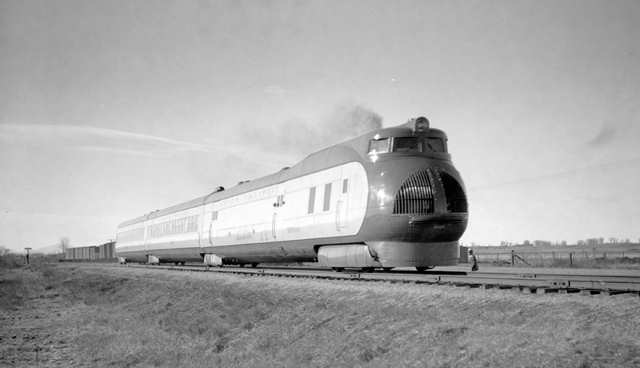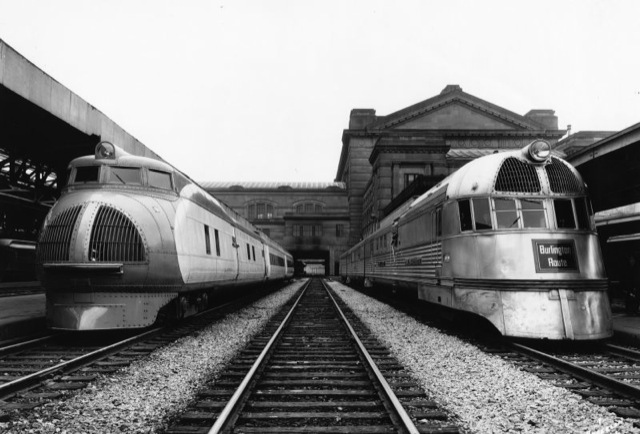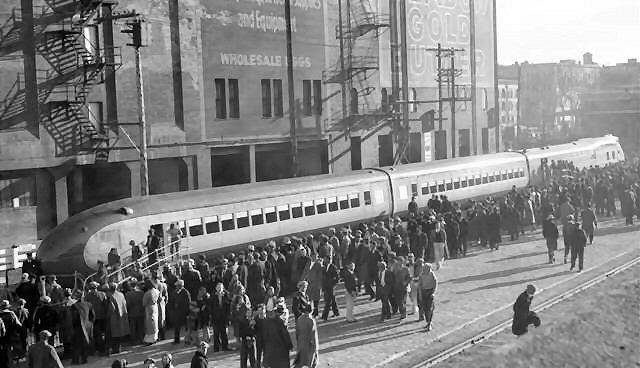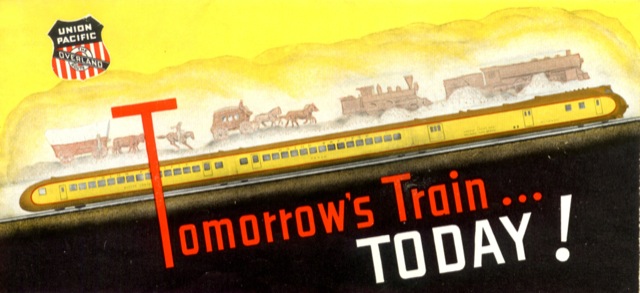The Union Pacific Railroad won the race to put the first streamliner in service, introducing the bright yellow M-10000 to the traveling public in 1934. Built by Pullman with aluminum bodies and a distillate (kerosene) engine made by a division of General Motors, the M-10000 was supposed to be the future of passenger rail.

As it turned out, it wasn’t. The Burlington Zephyr, which was completed just weeks after the M-10000, was powered by a Diesel engine (also made by General Motors) and sheathed in stainless steel. The Zephyr, it would turn out, would be much closer to the real future of passenger trains.

Nevertheless, the bright yellow paint of the M-10000 was a refreshing change from Pullman green (though it was really a throwback to the color of many nineteenth-century passenger trains). The Union Pacific painted the roofs of most of its later passenger trains grey instead of the brown used on the M-10000.

Perhaps the strangest thing about the M-10000 was the rear end. Due to planned high speeds, they couldn’t safely put an open platform on the rear of the train like so many heavyweights had. But instead of putting large windows so passengers could see where they had been, the designers put a little food dispensary in the tail of the train. This must have disappointed many travelers.
As if this wasn’t bad enough, the Union Pacific came up with the totally unromantic name of “M-10000” for the train, “M” standing for motorcar. Technically, the M-10000 was a sleeker version of the motorcars the Union Pacific had owned and operated since 1905. But since the railroad’s goal was to point forward, not backwards, it should have called the train something like S-1 or Streamliner 1.

In the spring of 1934, the Union Pacific sent the train on a 12,625-mile tour to 68 cities all over the country. Nearly 1.2 million people walked through the three-car train, many of whom picked up a copy of this brochure. Click on the image above to download a complete copy of the brochure (3.2 megabytes). Parts of the brochure will appear upside down because it was printed to be folded.
